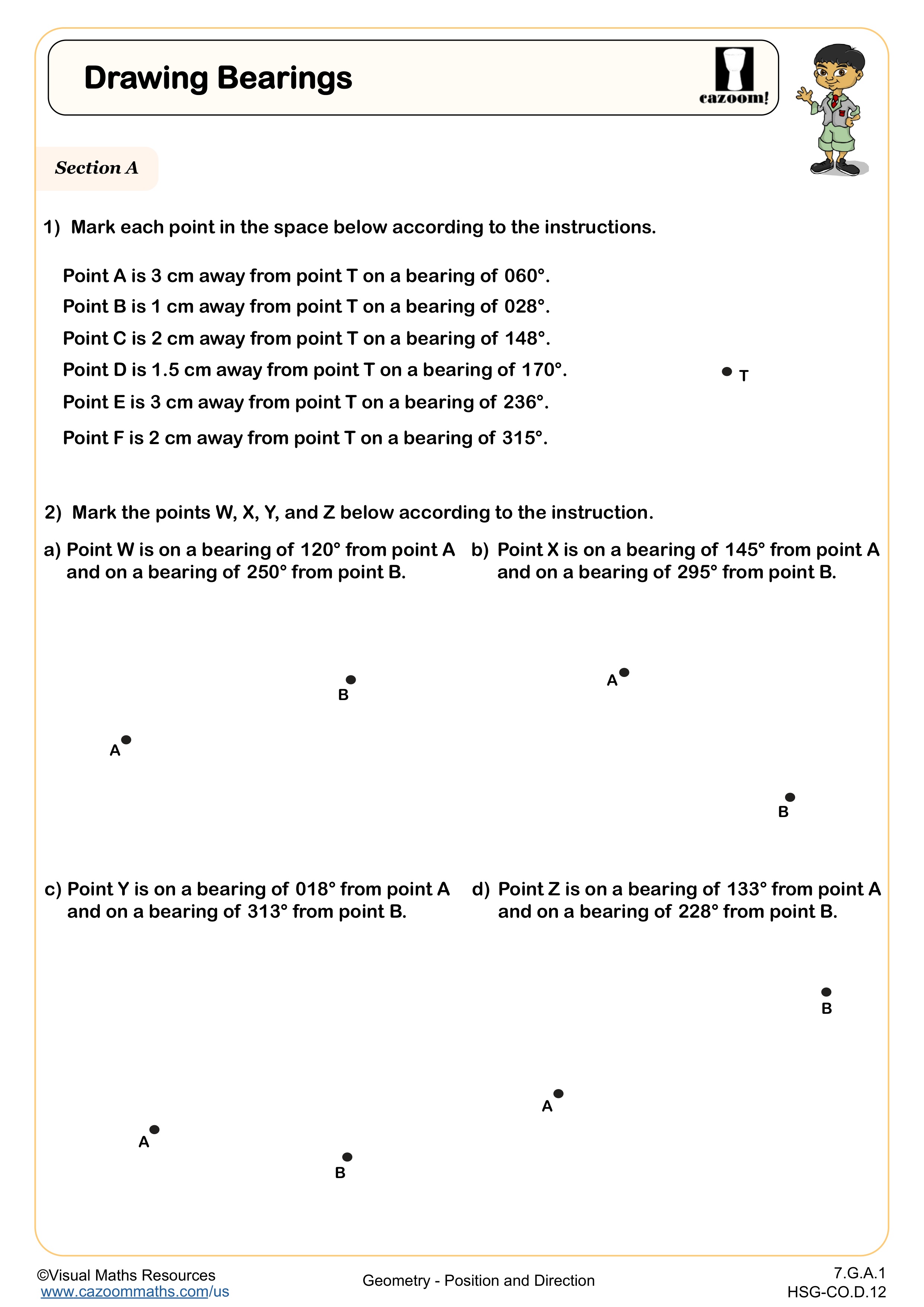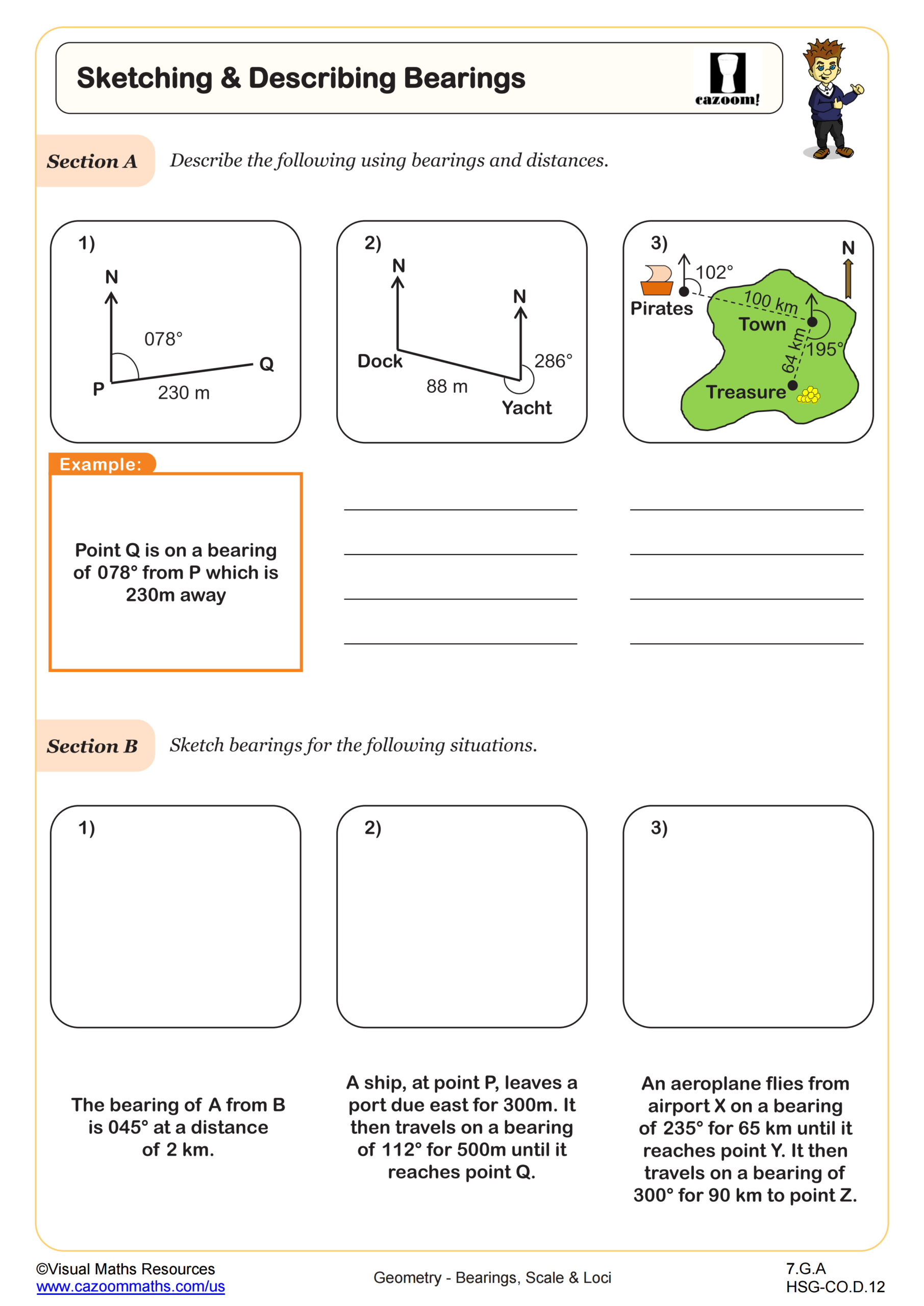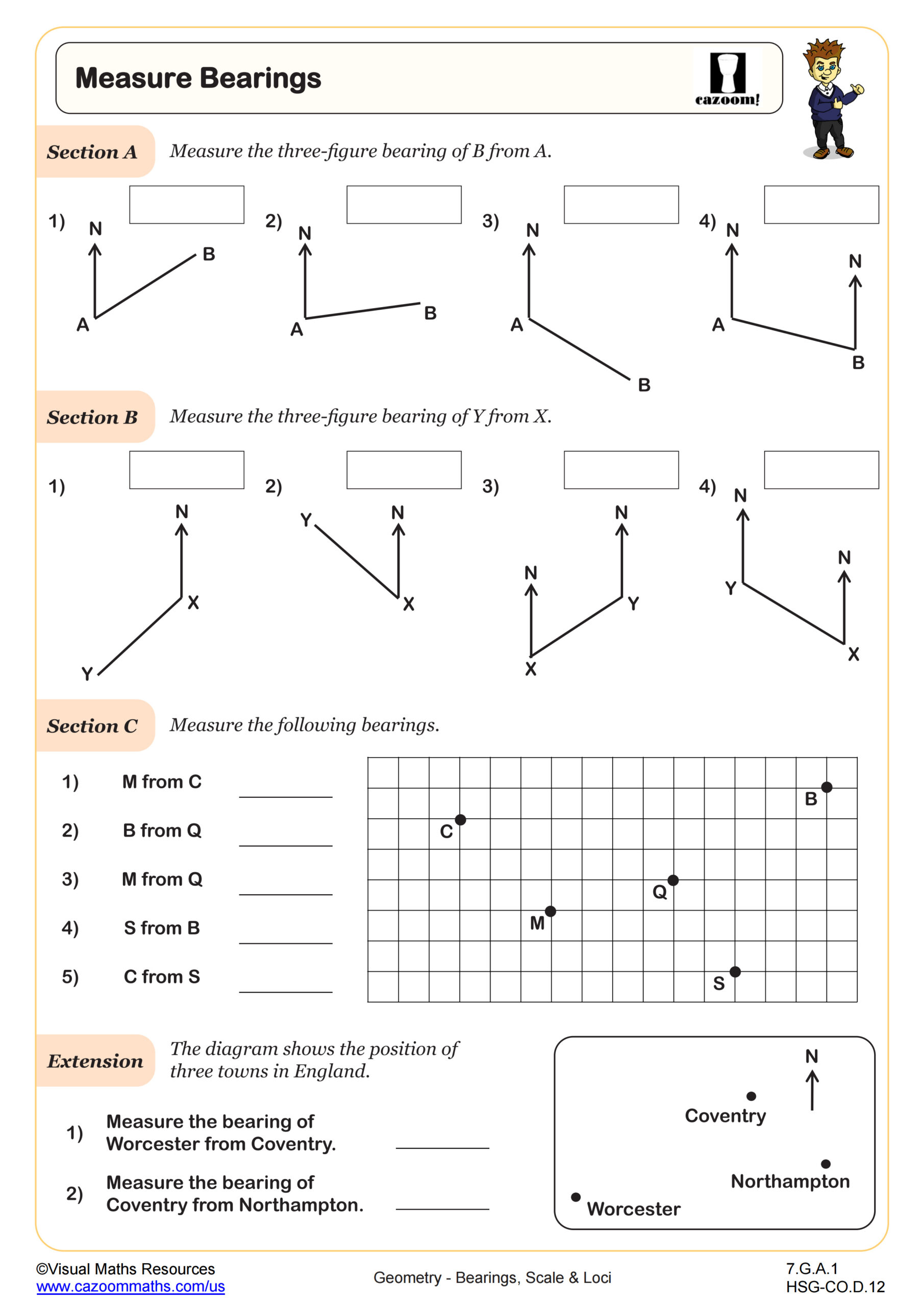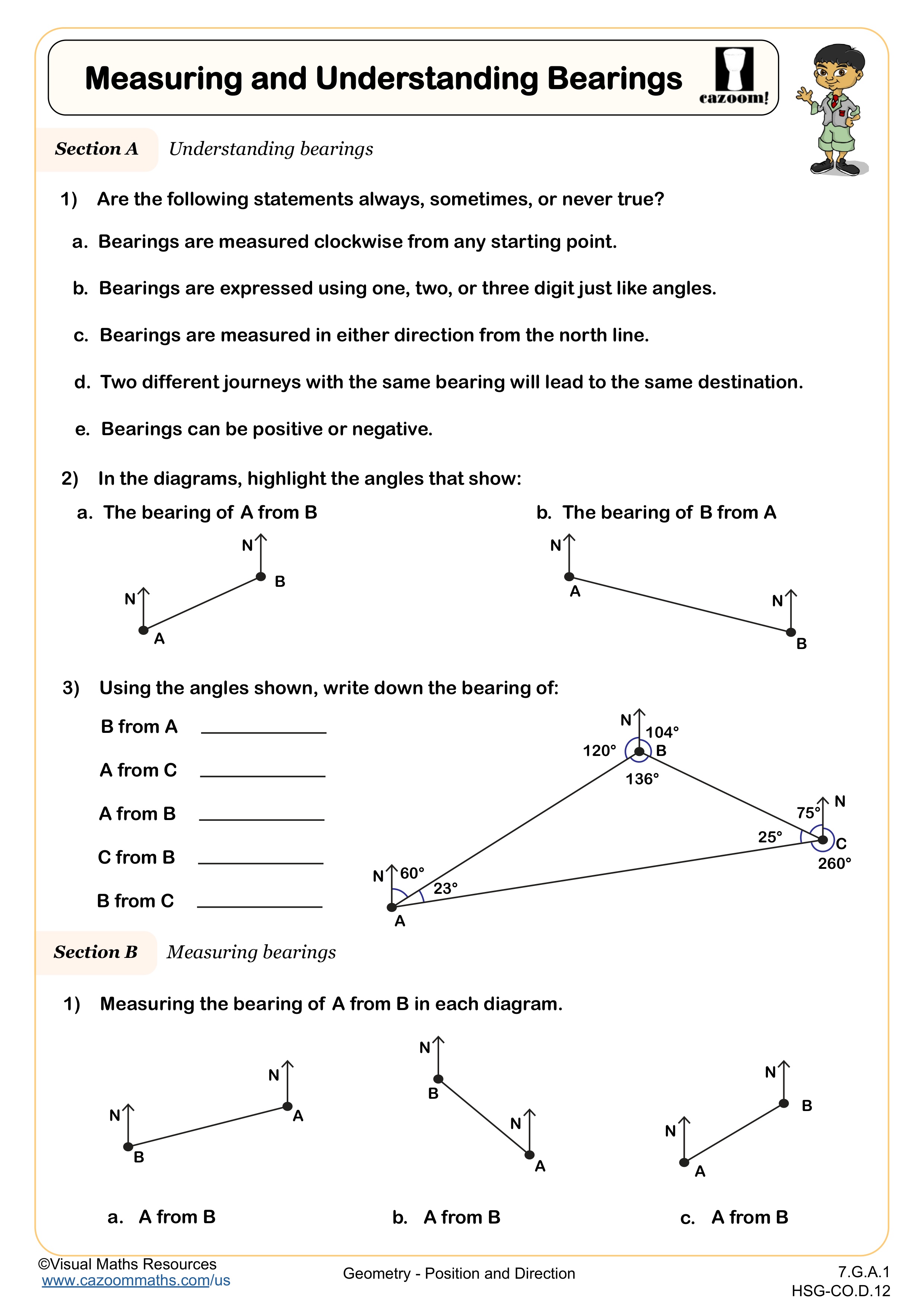Back to:
Drawing Bearings WORKSHEET
Suitable for Grades: 7th Grade, Geometry
CCSS: 7.G.A.1, HSG.CO.D.12
CCSS Description: Solve problems involving scale drawings of geometric figures, including computing actual lengths and areas from a scale drawing and reproducing a scale drawing at a different scale.
Make formal geometric constructions with a variety of tools and methods (compass and straightedge, string, reflective devices, paper folding, dynamic geometric software, etc.). Copying a segment; copying an angle; bisecting a segment; bisecting an angle; constructing perpendicular lines, including the perpendicular bisector of a line segment; and constructing a line parallel to a given line through a point not on the line.
Make formal geometric constructions with a variety of tools and methods (compass and straightedge, string, reflective devices, paper folding, dynamic geometric software, etc.). Copying a segment; copying an angle; bisecting a segment; bisecting an angle; constructing perpendicular lines, including the perpendicular bisector of a line segment; and constructing a line parallel to a given line through a point not on the line.
Drawing Bearings WORKSHEET DESCRIPTION
This worksheet provides comprehensive practice in drawing bearings, progressing from basic construction to scaled diagrams.
In Section A students begin by plotting six points around a central point T, working with bearings that span the full 360° range from acute to reflex angles and measuring distances in cm. The section then advances to intersection problems, where students must locate points using bearings from two different reference points simultaneously.
Section B introduces scale drawings, combining bearing construction with proportional reasoning. Students work through six increasingly challenging scales: starting with straightforward conversions (1 cm = 10 m), progressing through intermediate ratios (1 cm = 100 m, 1 cm = 25 m), and culminating with more complex scales (1 : 10,000). This progression ensures students develop confidence with scale conversions while maintaining focus on accurate bearing construction.
In Section A students begin by plotting six points around a central point T, working with bearings that span the full 360° range from acute to reflex angles and measuring distances in cm. The section then advances to intersection problems, where students must locate points using bearings from two different reference points simultaneously.
Section B introduces scale drawings, combining bearing construction with proportional reasoning. Students work through six increasingly challenging scales: starting with straightforward conversions (1 cm = 10 m), progressing through intermediate ratios (1 cm = 100 m, 1 cm = 25 m), and culminating with more complex scales (1 : 10,000). This progression ensures students develop confidence with scale conversions while maintaining focus on accurate bearing construction.




